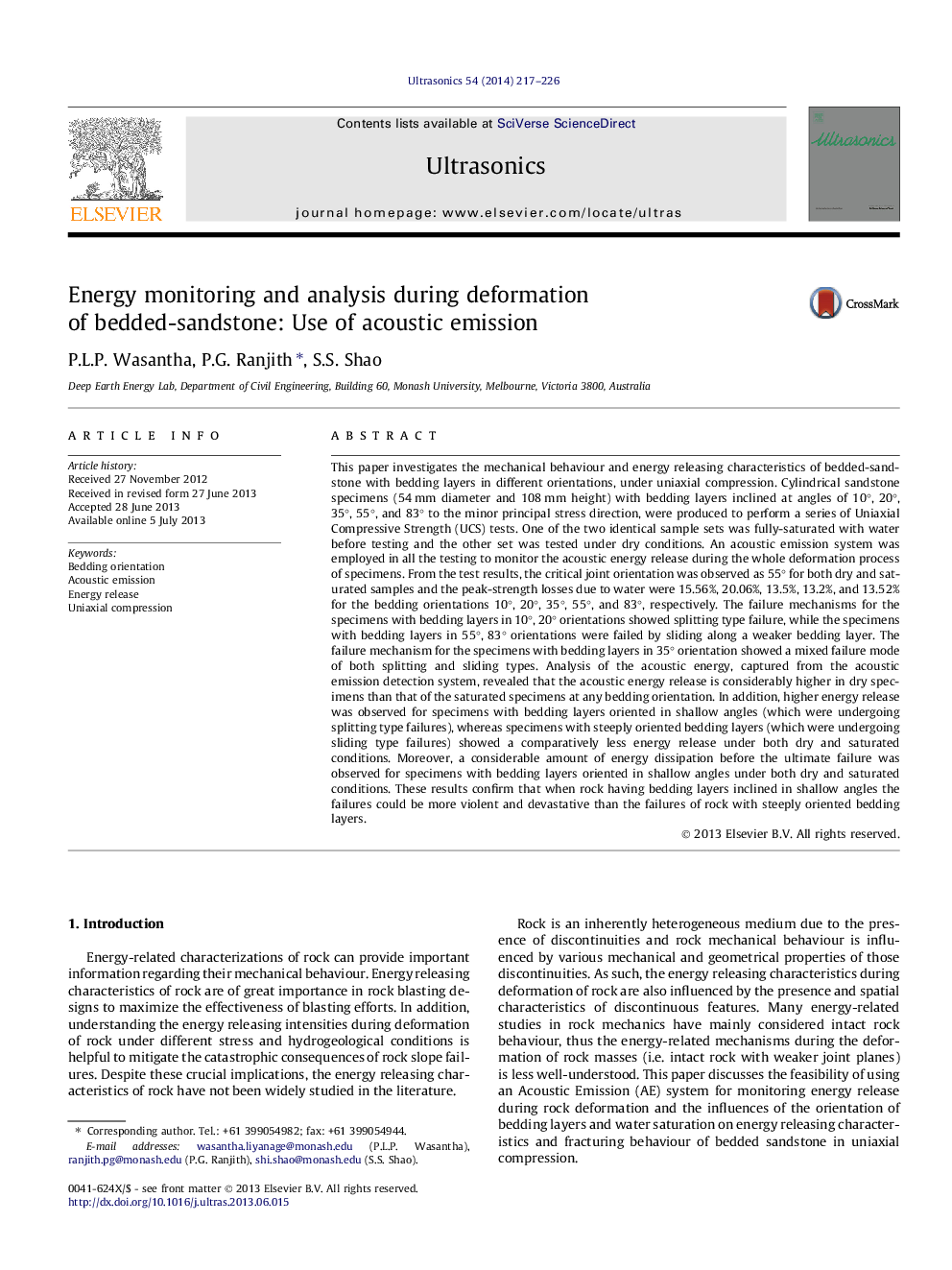| کد مقاله | کد نشریه | سال انتشار | مقاله انگلیسی | نسخه تمام متن |
|---|---|---|---|---|
| 1758978 | 1019258 | 2014 | 10 صفحه PDF | دانلود رایگان |
• Water-weakening effect of bedded-sandstone depends on the bedding orientation.
• Three failure mechanisms of sandstone were observed depending on the bedding orientation.
• Total energy release is considerably higher at dry state than at saturated state.
• Total energy release is decreasing with increasing bedding orientation.
• Energy dissipation is higher at shallow bedding orientation.
This paper investigates the mechanical behaviour and energy releasing characteristics of bedded-sandstone with bedding layers in different orientations, under uniaxial compression. Cylindrical sandstone specimens (54 mm diameter and 108 mm height) with bedding layers inclined at angles of 10°, 20°, 35°, 55°, and 83° to the minor principal stress direction, were produced to perform a series of Uniaxial Compressive Strength (UCS) tests. One of the two identical sample sets was fully-saturated with water before testing and the other set was tested under dry conditions. An acoustic emission system was employed in all the testing to monitor the acoustic energy release during the whole deformation process of specimens. From the test results, the critical joint orientation was observed as 55° for both dry and saturated samples and the peak-strength losses due to water were 15.56%, 20.06%, 13.5%, 13.2%, and 13.52% for the bedding orientations 10°, 20°, 35°, 55°, and 83°, respectively. The failure mechanisms for the specimens with bedding layers in 10°, 20° orientations showed splitting type failure, while the specimens with bedding layers in 55°, 83° orientations were failed by sliding along a weaker bedding layer. The failure mechanism for the specimens with bedding layers in 35° orientation showed a mixed failure mode of both splitting and sliding types. Analysis of the acoustic energy, captured from the acoustic emission detection system, revealed that the acoustic energy release is considerably higher in dry specimens than that of the saturated specimens at any bedding orientation. In addition, higher energy release was observed for specimens with bedding layers oriented in shallow angles (which were undergoing splitting type failures), whereas specimens with steeply oriented bedding layers (which were undergoing sliding type failures) showed a comparatively less energy release under both dry and saturated conditions. Moreover, a considerable amount of energy dissipation before the ultimate failure was observed for specimens with bedding layers oriented in shallow angles under both dry and saturated conditions. These results confirm that when rock having bedding layers inclined in shallow angles the failures could be more violent and devastative than the failures of rock with steeply oriented bedding layers.
Journal: Ultrasonics - Volume 54, Issue 1, January 2014, Pages 217–226
